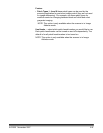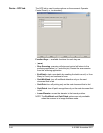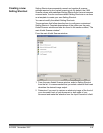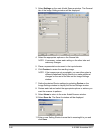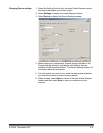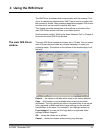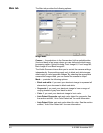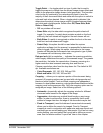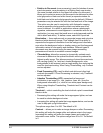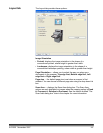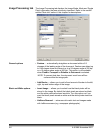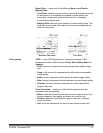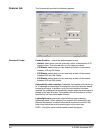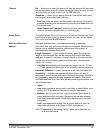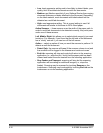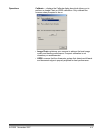
4-4 A-61580 November 2007
• Relative to Document (zone processing): used for batches of same-
sized documents, zone processing is a floating fixed crop window
(the zone) located relative to the upper left corner of a document. It
allows you to select an area on the document to be delivered in either
color/grayscale or black and white format (a separate window for
both black and white and color/grayscale may be defined). Different
parameters may be selected for both the front and back of the image.
This option may be used in conjunction with Automatic cropping
where a separate color/grayscale or black and white area to be
saved is desired. It is useful in applications where a photograph,
signature, embossment or seal appears in a consistent area for an
application (you may want that small area in color/grayscale and the
rest in black and white). To define a zone, select the Layout tab.
Binarization — these options work on grayscale images and outputs a
black and white electronic image. Their strength lies in the ability to
separate the foreground information from the background information
even when the background color or shading varies, and the foreground
information varies in color quality and darkness. Different types of
documents may be scanned using the same image processing
parameters and results in excellent scanned images.
• iThresholding: allows the scanner to dynamically evaluate each
document to determine the optimal threshold value to produce the
highest quality image. This allows scanning of mixed document sets
with varying quality (i.e., faint text, shaded backgrounds, color
backgrounds) to be scanned using a single setting thus reducing the
need for document sorting. When using iThresholding, only Contrast
can be adjusted.
• Fixed Processing (FP): used for black and white and other high
contrast documents. If Fixed Processing is selected, only Threshold
can be adjusted.
• Adaptive Thresholding (ATP): separates the foreground
information in an image (i.e., text, graphics, lines, etc.) from the
background information (i.e., white or non-white paper background).
When using Adaptive Thresholding, Threshold and Contrast can be
adjusted.
Threshold — aids in controlling the level at which a pixel is considered
black or white.
• Decreasing this setting will make the image appear lighter, and can
be used to subdue background noise.
• Increasing this setting will make the image appear darker, and can be
used to help pick up light information.
The options range from 0 to 255. The default is 90.
Contrast allows you to make an image sharper or softer. Decreasing
this setting will make the image softer and reduce noise in the image.
Increasing this setting will make the image clearer and make light
information more visible. The options range from-50 to 50. The default
is 0.



